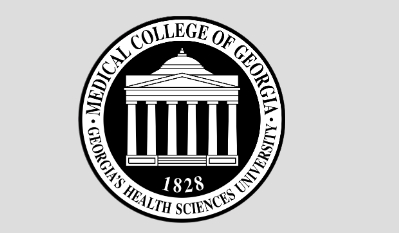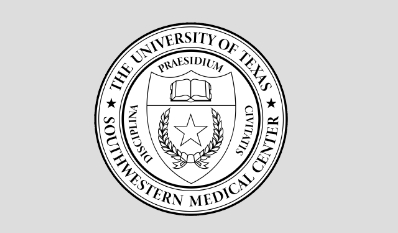End your neck and back pain. Schedule an appointment today!

Dr. Rappard graduated from UCLA in 1992. Having been a history buff since early childhood, Dr. Rappard received a Bachelor of Arts degree in History. Rappard specialized in Greco-Roman studies.
Dr. Rappard was a working student. He trained as an Emergency Medical Technician and worked in several emergency rooms while a full-time student. His emergency room duties coincided with the 1992 Los Angeles riots. During the riots, Dr. Rappard worked at downtown Los Angeles’ California Medical Center, a trauma center and one of the busiest ER’s during the riots.
When not working or studying Dr. Rappard was active in sports. In 1992 he founded the hang-gliding club at UCLA.
While at UCLA Dr. Rappard also completed his pre-medicine requirements and took his medical college admission test.
Because he studied pre-medicine and history at the same time, Dr. Rappard obtained a waiver from the University, allowing him to exceed the maximum number of units studied prior to graduating.
Dr. Rappard entered medical school at the George Washington University in Washington, D.C. with the class of 1996.

Dr. Rappard travelled to Washington D.C. almost immediately after graduating from UCLA and started medical school at the George Washington University School of Medicine (GW). GW is the 11th oldest medical school in the USA, founded in 1824.
By the second semester of the first year of medical school Dr. Rappard was hooked on the neurosciences. While at GW he completed electives in Neurosurgery and Neuroradiology. At GW, Dr. Rappard was exposed to Neurosurgery and Neuroradiology by Laligam Sekhar, William Bank and Wayne Olan. It was during these electives that Dr. Rappard became aware of a brand-new field in medicine, later called Neurointerventional Surgery. At the time, Dr’s Bank and Olan were D.C. pioneers of this new field. Neurointerventional Surgeons were developing techniques to blend Neurosurgery and Neuroradiology to perform procedures on the brain and spine never before possible. These procedures involved the use of micro-instruments and precision guidance by hi-tech imaging to perform minimally invasive surgery of the brain and spine. By his 4th year of medical school Dr. Rappard had decided to become a Neurointerventional Surgeon.
Dr. Rappard graduated with distinction from the George Washington University School of Medicine in 1996. This distinction is given to top graduating students in the class and is the equivalent of graduating with honors.
In 2014 Dr. Rappard was inducted into The George Washington University School of Medicine Chapter of Alpha-Omega-Alpha, (AOA), the medical honor society. AOA is the only medical honor society in the world. The GW AOA chapter in Washington D.C. was the city’s first, founded in 1954. Dr. Rappard was elected and inducted into the society as a distinguished alumni based on his scientific, medical and community service since graduating from GW.

After graduating medical school, Dr. Rappard entered into a surgical internship at The Medical College of Georgia (MCG), graduating in 1997. MCG is the only public medical school in the state of Georgia and was founded in 1828. An intern is a medical doctor who has graduated medical school but is not yet licensed to practice medicine unsupervised.
Surgical internship is a one-year course of training, specializing in surgery. During this internship Dr. Rappard learned the basics about managing surgical patients. Dr. Rappard’s internship was heavily concentrated on Neurosurgery and Trauma Surgery.
Dr. Rappard served as a surgical intern at MCG under Thomas Gadacz, who was previously a Professor of Surgery at Johns Hopkins University. Dr. Gadacz instilled in all his surgical trainees a sense that they were “internists who operate,” meaning that they were expected to have the knowledge of medicine and diagnosis that an internist would have, while also being able to perform surgery. To this day Dr. Gadacz’s philosophy remains the core of Dr. Rappard’s method of treating and managing surgical patients. Dr. Rappard heavily relied on Dr. Gadacz’s philosophy while later managing Neurocritical Care ICU’s and simultaneously directing hospital Neurointerventional Surgery programs.

After completing a surgical internship, the next step on the path to becoming a Neurointerventional Surgeon was a four-year residency in Diagnostic Radiology at the University of California at Irvine (UCI). Dr. Rappard was now a “Resident.” A Resident is a physician who holds a license to practice medicine but is undergoing supervised training in a medical specialty. Diagnostic Radiology is a medical specialty consisting of the performance and interpretation of procedures involving energy to form images from inside the body. Common forms of energy utilized include x-rays, ultrasound waves and radio waves. By interpreting these images, doctors, called Radiologists, can diagnose conditions deep in the body. Dr. Rappard’s residency at UCI lasted from 1997-2001.
While at UCI, Dr. Rappard received expert instruction in advanced neurological MRI, head and neck Imaging, spinal imaging and the angiographic diagnosis of cerebrovascular diseases. Expert Neuroradiology UCI faculty (and mentors) at the time included Anton Hasso, Henry Pribram, William Bradley, Rosaland Dietrich and Talal Beydoun.
Dr. Rappard’s interest in the diagnosis of neurological diseases led him to co-author a book chapter on spinal imaging and several chapters on pediatric brain diseases.

Immediately after finishing residency and becoming board certified in Diagnostic Radiology, Dr. Rappard had the good fortune to be selected into a one-year Neuroradiology fellowship, followed by a 2-year Neurointerventional Surgery fellowship, at the University of Texas Southwestern at Dallas (UTSW). The program was chaired by Phillip Purdy, a pioneer in Neurointerventional Surgery in the Southwestern United States. Dr. Rappard was now a “Fellow” in Neuroradiology and Neurointerventional Surgery. A Fellow is a physician who has already completed medical training and can act as a consultant or treating physician while still undergoing advanced training.
From 2001-2002 Dr. Rappard completed advanced training in the medical subspecialty of Neuroradiology, becoming an expert in the imaging diagnosis of brain and spinal disorders, catheter based diagnostic procedures (neuroangiography), image guided spinal injection procedures and the minimally invasive treatment of spinal compression fractures. In 2003 Dr. Rappard became board certified in Neuroradiology and became a Senior Member of the American Society of Neuroradiology, a status conferred on members with advanced training in Neuroradiology.
After completing Neuroradiology training in 2002, Dr. Rappard entered into sub-sub specialty training in Neurointerventional Surgery. Training was supervised by Phillip Purdy and G. Lee Pride.
At UTSW, Dr. Rappard began his training by becoming the first Fellow from Neuroradiology to undergo clinical training alongside Neurosurgical trainees. Neurosurgical training at UTSW was supervised by Jonathan White. Under Dr. White’s supervision Dr. Rappard was trained in Neurocritical care medicine, perioperative and intra-operative Neurosurgical care.
After completing his preparatory clinical training in Neurosurgery, Dr. Rappard began supervised training in Neurointerventional Surgical procedures. This included the treatment of stroke, cerebral aneurysms, brain tumors and cerebral vascular malformations. Dr. Rappard completed his training in 2004 and was accepted into the Society of Neurointerventional Surgery as a Senior Member. Dr. Rappard remained at UTSW as an Assistant Professor and taught Neuroradiology and Neurointerventional Surgery to Residents and Fellows.
Dr. Rappard was very active in research at UTSW, with most of his research focused on Dr. Purdy’s Percutaneous Intraspinal Navigation (PIN). PIN was a developing procedure where surgeons would navigate to the brain via the spinal canal. His initial research focused on the use of advanced MRI techniques to guide intracranial and endospinal procedures. Dr. Rappard also became involved in research utilizing endoscopes, or flexible cameras, navigated into the spine and, from there, into the brain. This exposure paved the way for Dr. Rappard’s subsequent interest in NeuroEndospine procedures (Endoscopic Spine Surgery), his current practice focus.
For some time after completing sub specialization in Neuroradiology and sub-sub specialization in Neurointerventional Surgery, Dr. Rappard was absorbed with one of the busiest Neurocritical Care and Neurointerventional Surgery practices in Los Angeles, The Los Angeles Brain and Spine Institute. Dr. Rappard noticed, however, that while Neurosurgical brain operations had progressed to the point that they could be performed safely with an overnight hospital stay, the same was not true of spine surgery. Most patients at the time were undergoing very invasive procedures, requiring significant bone and muscle destruction and often requiring the implantation of screws, rods, etc. Dr. Rappard sought out to discover if the same advances being made in treating brain diseases could be applied to spinal disorders.
From 2008-2009 Dr. Rappard underwent his third Fellowship, this time in Endoscopic Spine Surgery, at the California Spine Institute. Dr. Rappard participated in nearly 200 endoscopic spine procedures during his Fellowship.
In 2012 Dr. Rappard opened the Los Angeles Minimally Invasive Spine Institute, specializing in spinal disorders. Dr. Rappard became a Mentee of Dr. Anthony Yeung, Founder of the Desert Institute For Spine Care, in Phoenix, Arizona. Dr. Yeung is widely regarded as the “Father” of modern Endoscopic Spine Surgery training and is famous for his rigorous training and standards. Dr. Yeung’s mentorship allowed Dr. Rappard to adopt advanced Endoscopic Spine Surgery techniques and exposed Dr. Rappard to Endoscopic Spine Surgery masters from all over the world.
One of the tenets of Dr. Yeung’s training is that the Endoscopic Surgeon must recognize the need for traditional “open” or minimally invasive spine surgery techniques and must have access to traditional Spine Surgery in the rare case of emergencies. As a disciple of Dr. Yeung’s philosophy, Dr. Rappard created the Los Angeles Minimally Invasive Surgery Center, one of the few comprehensive Spine Surgery facilities in California. The facility is equipped to treat the spectrum of common spine surgical problems and is staffed with Spine Surgeons skilled in all aspects of Spine Surgery, not just Endoscopic Spine Surgery.
End your neck and back pain. Schedule an appointment today!
Contact us now to schedule your consultation or call us at (424) 777-7463 (424-77-SPINE)